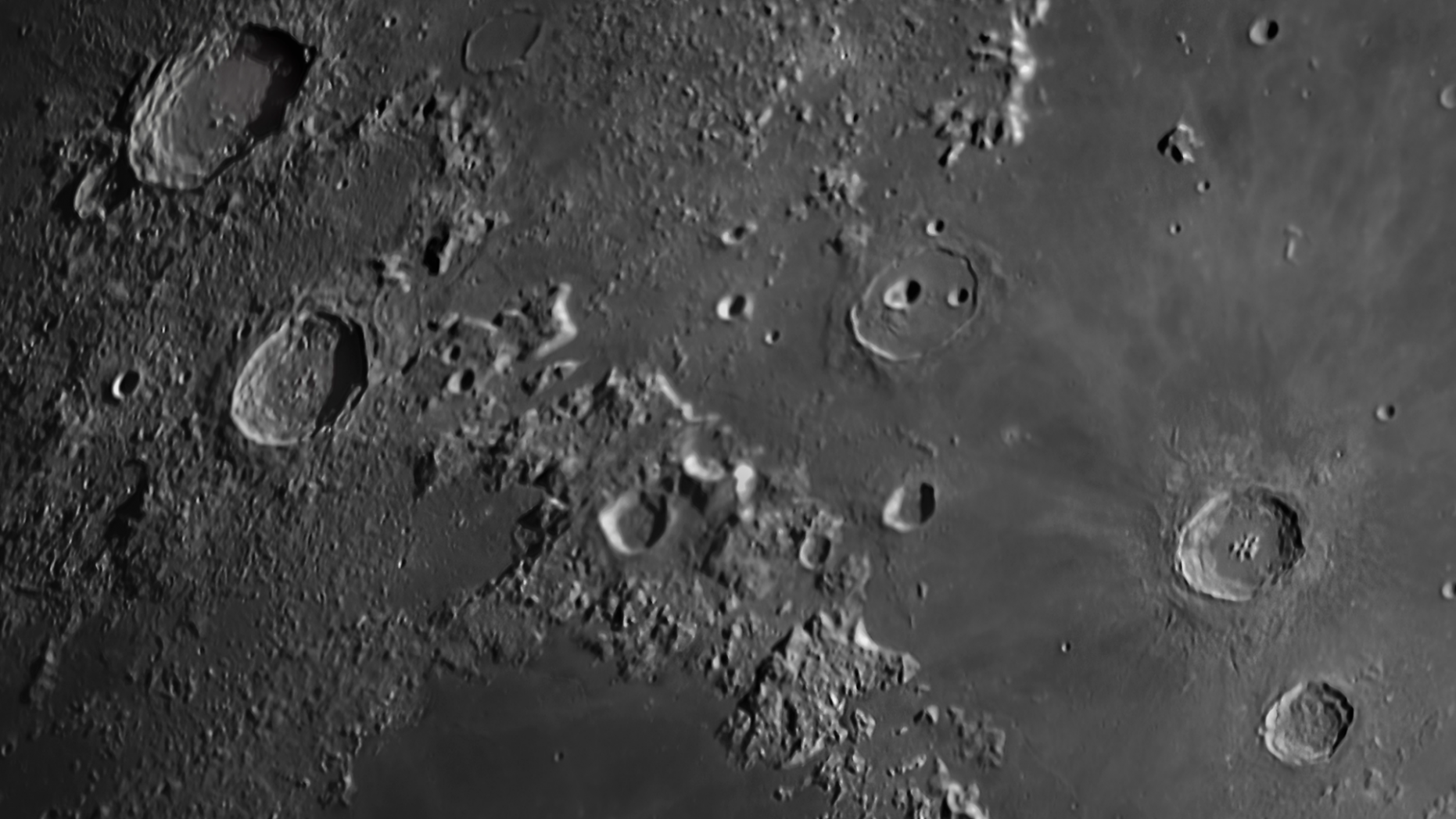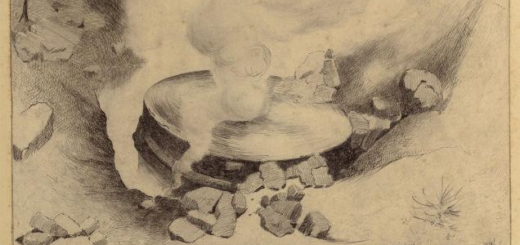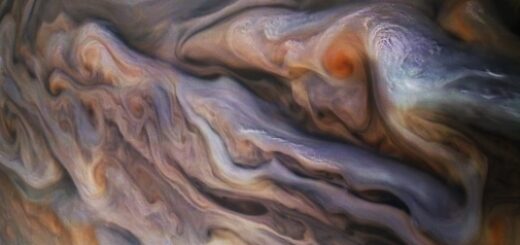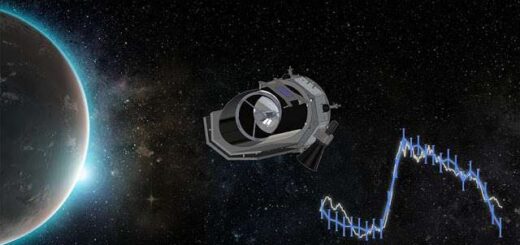PHOTO: See the Moon in all its cratered, groovy glory

Miguel Claro is a professional photographer, author and science communicator based in Lisbon, Portugal, who creates spectacular images of the night sky. As a European Southern Observatory photo ambassador, a member of The World At Night and the official astrophotographer of the Dark Sky Alqueva Reserve, he specializes in astronomical skyscapes that connect Earth and the night sky. Join Miguel here as he takes us through his photograph “Flying Over the Moon Crater Aristoteles and Rimae of Theaetetus.”
This moonscape scene shows a cluster of impact craters on the moon.
I captured this high-resolution image from the Cumeada Observatory, headquarters of the Dark Sky Alqueva Reserve in Portugal, using a Celestron C14 EdgeHD XLT telescope with aZWO ASI174MC astrophotography camera.
In the upper left of this view is Aristoteles, a large impact crater. With a diameter of 54 miles (87 kilometers), Aristoteles has a complex border surmounted by peaks that rise nearly 11,000 feet (3,350 meters) above the crater floor. The inner walls are wide and finely terraced, and theouter ramparts display a generally radial structure of hillocks. [Moon Photography Tips from Astrophotographers]
Immediately south of Aristoteles lies the slightly smaller crater, Eudoxus, measuring 41 miles (67 km) across. Almost centered in the photo is the Cassini crater,which contains two small craters known as Cassini A and Cassini B. The little craters are only 9 miles (15 km) and 6 miles (9 km) wide, while the diameter of the larger crater is about 35 miles (57 km).
From the bottom center to the low edge of the image, two main rilles, or shallow grooves, are visible. One, known as Rima Calippus, measures 12 miles (20 km) long. The other, Rimae Theaetetus, has a length of 16 miles (25 km). On the right side, we can see two more large craters, Aristillus, with a diameter of 34 miles (55 km), and below it, the crater of Autolycus, with a diameter of 24 miles (39 km).



 Creators of mankind
Creators of mankind Description of “Tall white aliens”
Description of “Tall white aliens” Where they came from?
Where they came from? About hostile civilizations
About hostile civilizations The war for the Earth
The war for the Earth “Tall white aliens” about eternal life
“Tall white aliens” about eternal life Video: “Nordic aliens”
Video: “Nordic aliens” Aliens
Aliens Alien encounters
Alien encounters The aliens base
The aliens base UFO
UFO Technology UFO
Technology UFO Underground civilization
Underground civilization Ancient alien artifacts
Ancient alien artifacts Military and UFO
Military and UFO Mysteries and hypotheses
Mysteries and hypotheses Scientific facts
Scientific facts


















